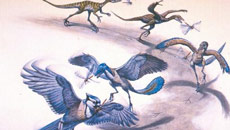Researchers, including an Indian-origin scientist, have developed sperm look-alike robots that can be used for drug delivery, in-vitro fertilisation (IVF), cell sorting and other applications at the microscopic level.
The sperm-inspired microbots, developed by the team of Islam Khalil and Sarthak Misra, can be controlled by oscillating weak magnetic fields.
The 322 micron-long robots consist solely of a head coated in a thick cobalt-nickel layer and an uncoated tail.
When the robot is subjected to an oscillating field of less than five millitesla, it experiences a magnetic torque on its head, which causes its flagellum to oscillate and propel it forward.
The researchers are then able to steer the robot by directing the magnetic field lines towards a reference point.
“Our microbots are either inspired from nature or directly use living micro-organisms such as magnetotactic bacteria and sperm cells for complex micro-manipulation and targeted therapy tasks,” said Sarthak Misra from University of Twente in the Netherlands.
"As technology progresses and many products get smaller, it becomes difficult to assemble objects on nano and micro-scales,” said Khalil from German University in Cairo (GUC).
"MagnetoSperm can be used to manipulate and assemble objects at these scales using an external source of magnetic field to control its motion," he added.
"In addition to nano-assembly, the radical downsizing afforded by the offloading of power and navigation systems opens up a wide range of biomedical tasks that MagnetoSperm can perform," Khalil said.
These include targeted drug delivery, in-vitro fertilisation, cell sorting and cleaning of clogged arteries, among others.
The team is now working on a method to generate a magnetic nanofibre that can be used as a flagellum.
The findings were published in the journal Applied Physics Letters.





